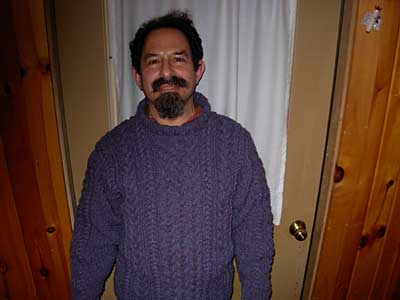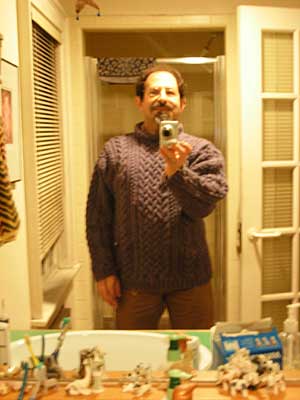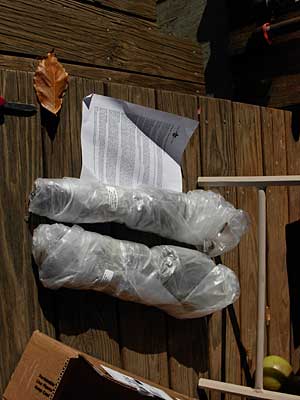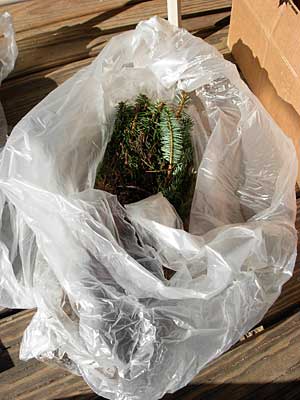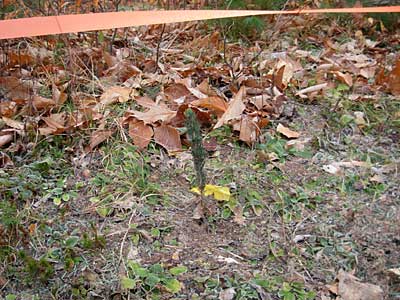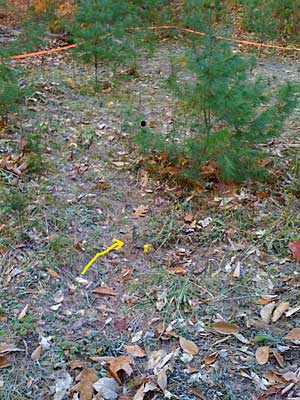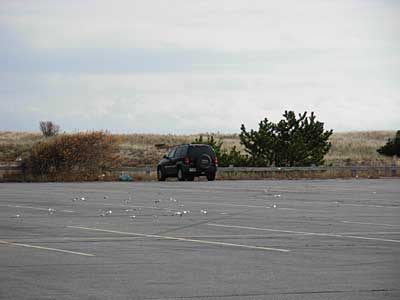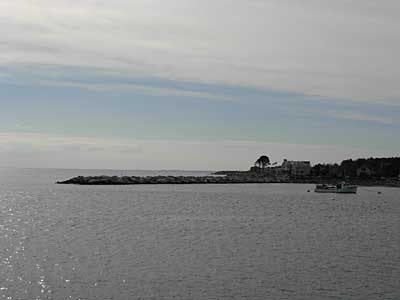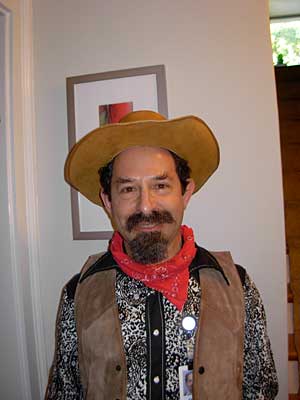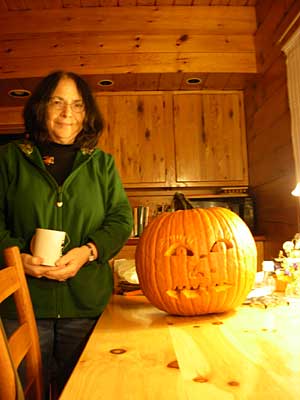We went out early last Saturday to get some lumber. I’ve been wanting to make benches to put around the fire pit. Not fine furniture, something to sit on. Matt had piled some stones up to make seating, so we have a start; but I was still thinking wood seating.
I enjoy getting out to the Red Mill. It’s off route 302, out of sight of the highway (though there is a sign on the highway, if you have a rough idea of where to look), down its own road. It makes the lumber department at Home Depot, or even a good suburban lumber yard like National Lumber in Newton, look like Disneyland. The Red Mill looks like where the wood comes from. I have the impression that the sheds are built far apart so that if one catches fire there’s a good chance the other sheds can be saved.
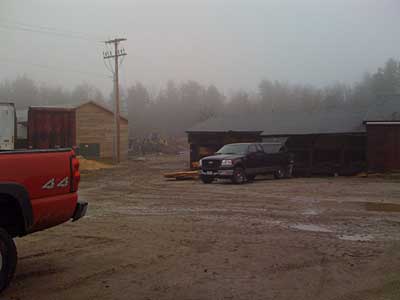
I told the guy in the office that I wanted some rough-cut lumber to make outdoor benches, and he said, “How about 1 x 8 hemlock?” OK, that would do. We went over to that shed by the black pickup in the picture and found two sixteen-footers, which he cut into 8 footers with a cordless circular saw. The owner of that black pickup, who was loading his purchases, said, “Making benches out of that stuff reminds me of playing on a seesaw one time when I was a kid. When I got home my mom saw that I had a problem — my butt was full of splinters from sliding back and forth on a board like that. Make sure you sand it really well before people sit on it!”
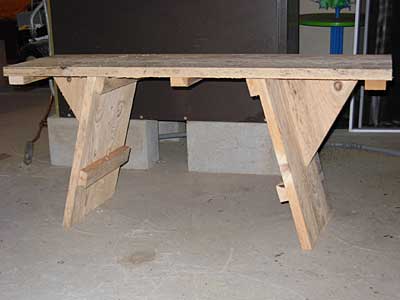
Here’s one of the benches at the end of the weekend. It’s still three separate pieces; the legs are all done, but the top is just nailed in a few places to hold the braces to the top, and the legs aren’t fastened to the top. I still have to do all that sanding!
When you buy a 1 x 8 board at a lumber yard, you expect it to be three quarters of an inch thick and something like seven and a half inches wide. The difference between the nominal 1 x 8 and the real dimensions are because of planing it smooth. The rough cut board is really an inch thick and really eight inches wide. I wanted the bench more like a foot wide, so I ripped some of the pieces to four inches wide. The braces are holding the eight inch part to the four inch part. IÂ had to learn a little about what was keeping the table saw blade from tilting before I could cut the legs and leg braces to the angle I wanted.
On the way home from the Red Mill we stopped off at a second-hand store on the other side of 302. I remembered having seen a clarinet there the other time we were there. It was still there, and the guy said he wanted $45 for it. I had no way of knowing if it was in playable condition, but I sprung for it — and he took $5 off the price because we were also getting a side table / bookcase for $20, and a Poland Springs gin (!) bottle for $5. So now I can learn to play the clarinet.
